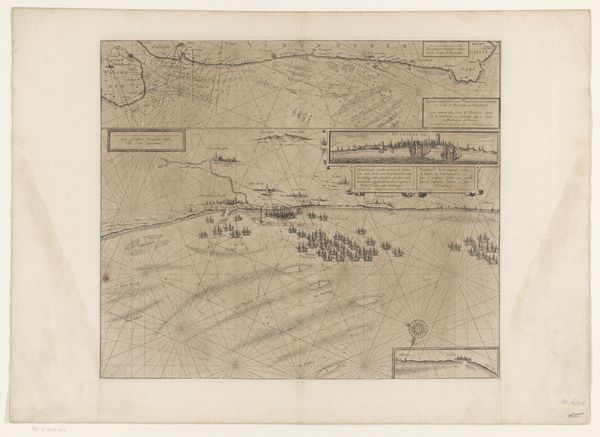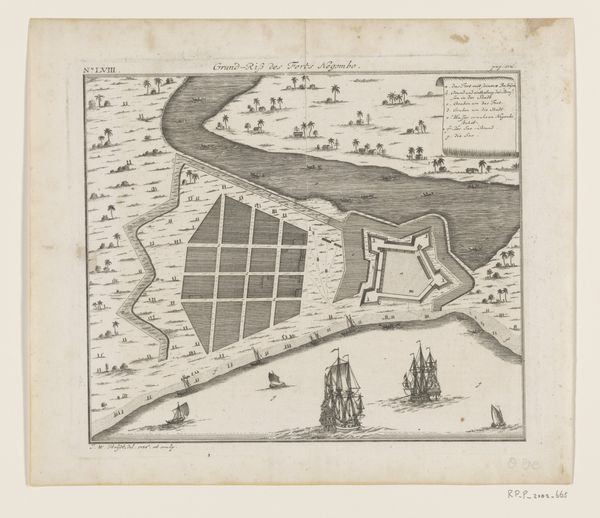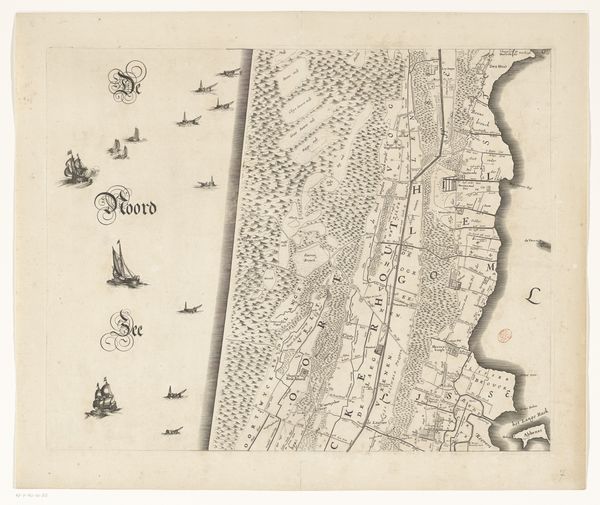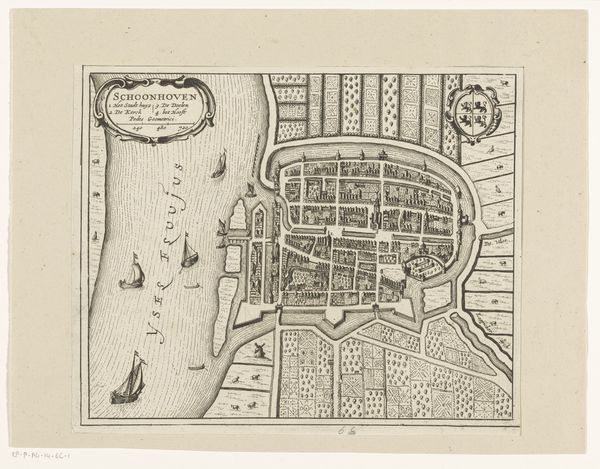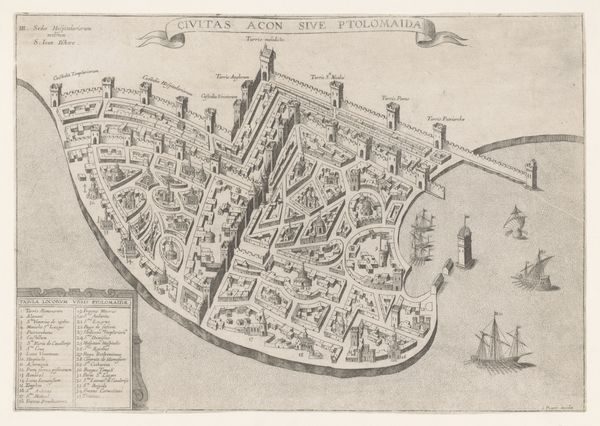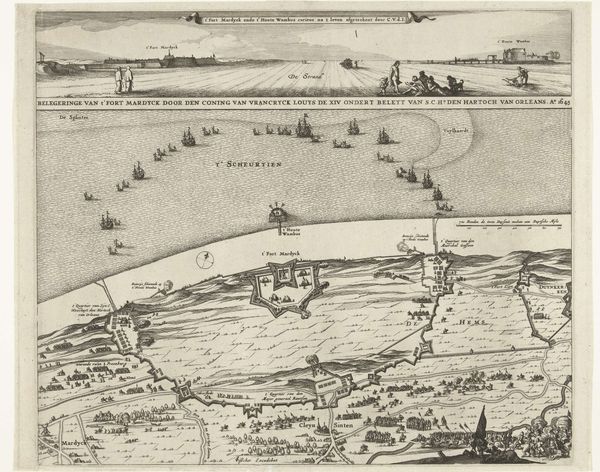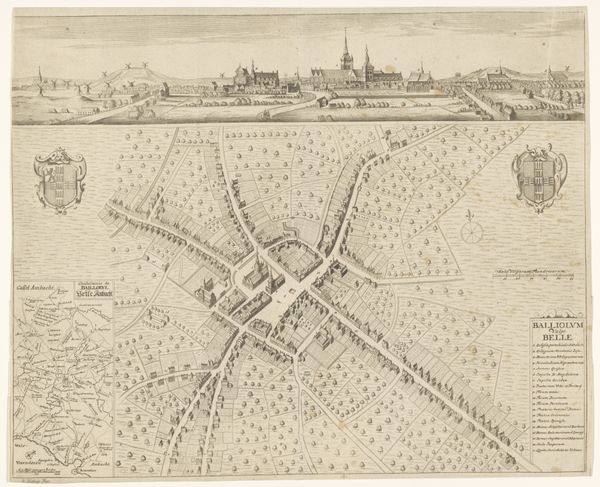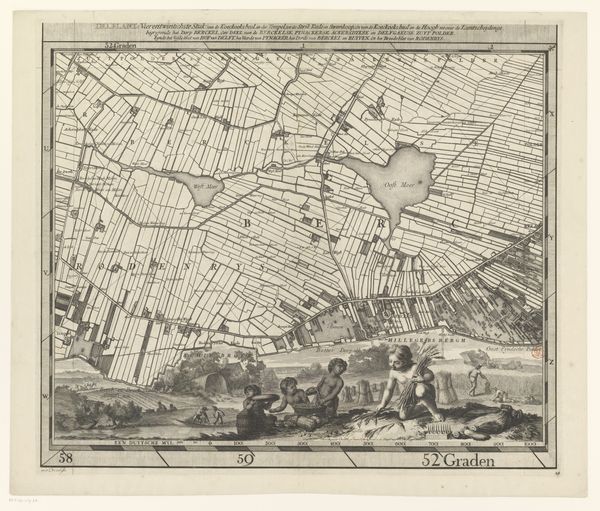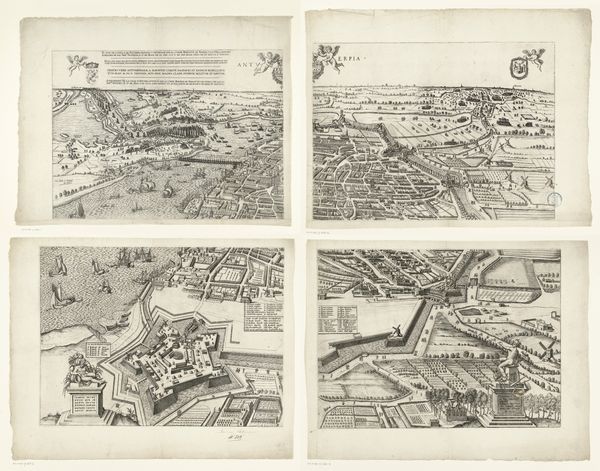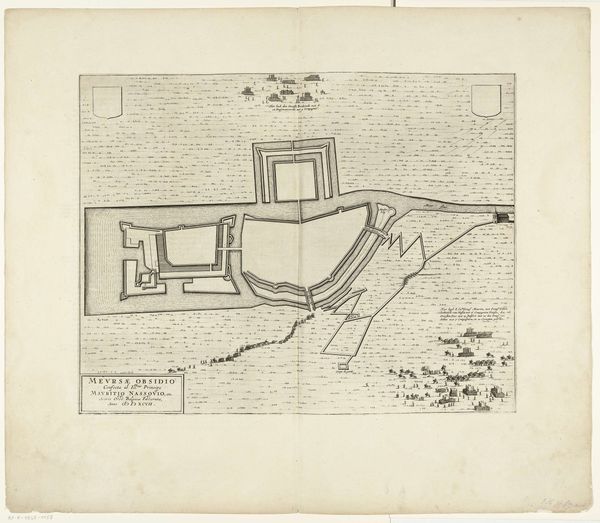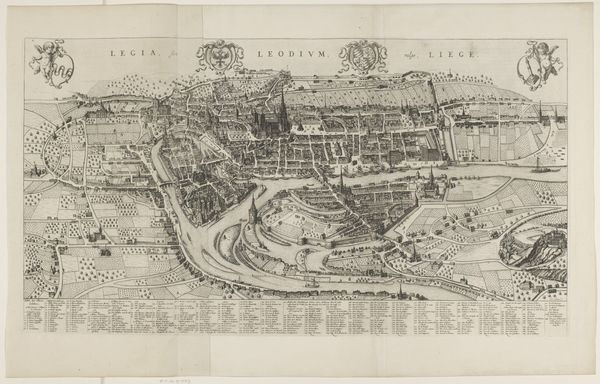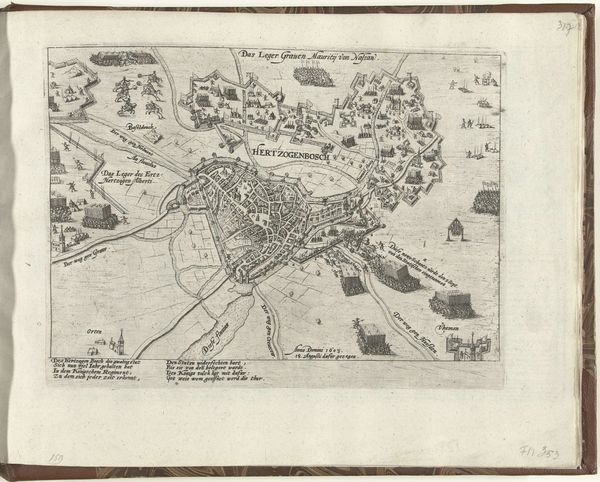
print, engraving
#
dutch-golden-age
# print
#
old engraving style
#
traditional media
#
landscape
#
pen-ink sketch
#
line
#
pen work
#
sketchbook drawing
#
cityscape
#
engraving
Dimensions: height 511 mm, width 591 mm
Copyright: Rijks Museum: Open Domain
Editor: Here we have "Kaart van het Hoogheemraadschap van Delfland (vierde deel)," a section of a map of Delfland, made between 1712 and 1735 by Luggert van Anse. It's an engraving. The precision of the lines is remarkable; what strikes me most is how this detailed rendering reduces a whole landscape into an exercise of pure form. What do you see in this piece? Curator: The elegance of the lines indeed constructs the composition's skeletal framework. Observe how the geometric division of space and linear forms organize fields, waterways and structures. Consider the strategic placement of cartographic elements – labels, legends – not merely for practical annotation, but to subtly influence our visual engagement with the planar surface. It almost negates representation. Do you agree? Editor: That’s an interesting point about the elements' placement; I hadn’t thought about that level of… abstraction, almost? I was initially reading it more literally. It feels both functional and artistic. Curator: Precisely. Notice the intricate crosshatching and stippling employed to create subtle variations in tone and texture. These formal elements contribute depth without disrupting the graphic integrity of the work. It’s as if van Anse aimed for perfect balance of the pragmatic and aesthetic dimensions. This approach results in visual interest despite the subject. What’s your reading? Editor: Thinking about balance, I appreciate the deliberate contrast between open areas and denser, more detailed zones; they draw my eye across the whole print, unifying the disparate elements. It makes the diagram quite engaging. Thank you for pointing out details, which are easily missed. Curator: It’s the close looking that allows us a proper encounter; considering this lens and what the lines present reveals intention in form, beyond function. We’ve barely scratched the surface, though.
Comments
No comments
Be the first to comment and join the conversation on the ultimate creative platform.

